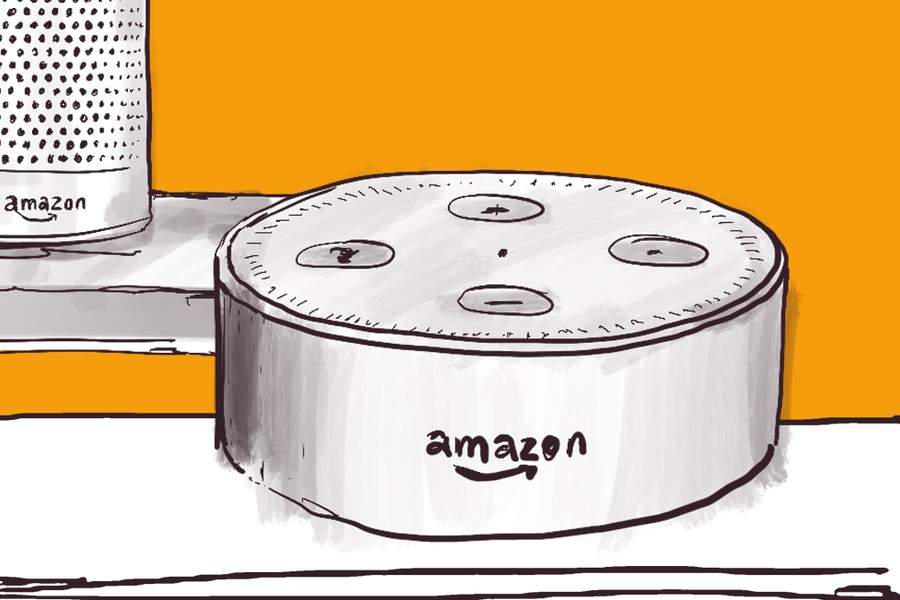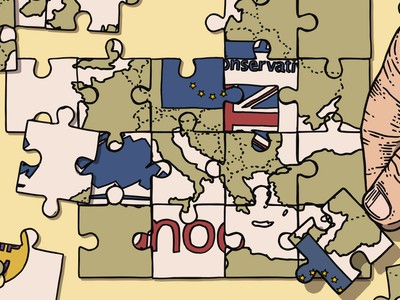The rise of online shopping, combined with broader shifts in consumer values and spending habits, has exposed an overbuilt retail landscape. 2018 is shaping up to be the year of the Company Voluntary Arrangement or CVA and stores are now closing at record rates: according to a report from Deloitte and LDC, the first half of 2018 saw 4,400 net closures across the UK high street, up from 103 in 2017. Traditional business models are being displaced and everyone is now scrambling for survival. The world’s largest retailer has even changed its name: after nearly half a century as Wal-Mart Stores, in 2018 the retailer dropped Stores from its legal name to reflect the new digital era. This is retail Darwinism – evolve or die.
This is retail Darwinism – evolve or die.
But there’s one word that often gets overlooked in all this talk of an impending apocalypse – relevance. The most important rule in retail is being relevant to customers. If you can’t deliver on the basic principles of giving customers what they want or standing out from the competition, then you don’t stand a chance. For these retailers, yes, the Doomsday clock is ticking.
For those willing to embrace change, however, this is a fantastically exciting time to be in retail. The future is fewer, more impactful stores. The future is offering shoppers a more blended online and offline experience. And the future is excelling at WACD: What Amazon Can’t Do.
Now the fifth largest retailer in the UK, Amazon is redefining the rules of retail. Amazon has grown from online bookseller to titan of 21st century commerce, having recently become the second company in the world to be valued at $1 trillion. Amazon’s platform has become a dominant e-commerce enabler, with the retailer now accounting for nearly half of e-commerce sales in its home market. What is more, Amazon is also the world’s largest product search engine (move over, Google). Its algorithms promote its own products. Its various devices – from Echo speakers to Dash buttons – seamlessly funnel purchases through to its platform. Amazon has access to data unlike any other retailer in the world. It isn't subject to the same tax laws as its bricks and mortar counterparts. Its retail business is subsidised by higher-margin segments like cloud computing services and, in the future, advertising should continue to grow to become another highly profitable revenue stream. You don’t need to be an antitrust guru to recognise Amazon has reaped the rewards of an uneven playing field.
Nonetheless, Amazon has made online shopping completely and utterly effortless by giving consumers access to millions of products right at their fingertips – which magically turn up the same or next day! Today, the consumer is firmly in the driving seat, and expectations around convenience, assortment and speed have never been greater.
In the future, this will go one step further as certain household products move towards simplified and auto-replenishment. As our homes get smarter, shoppers’ lives will get easier. The average adult currently makes a whopping 35,000 decisions every day but, in the future, our connected homes will do all the low-level, mundane re-ordering of household products, freeing up time to focus on more enjoyable tasks. Shoppers will no longer have to traipse down supermarket aisles when they run out of bleach or toilet paper. They will spend less of their valuable time buying the essentials and I believe the impact on the physical store will be immense: retailers today should be rethinking store layout and broader purpose of the store.
We will see a greater divergence between functional and fun shopping. For all its perks, shopping on Amazon is still a very utilitarian experience. This presents an opportunity for bricks & mortar competitors to distance themselves by injecting some personality and soul into their stores, which will further blur the lines between retail, hospitality and lifestyle. The store of the future won’t just be a place to buy things but also a place to eat, play, discover, and even work. It will be a place to borrow and to learn, but also crucially a place for retailers to appease the ‘on-my-terms’ shopper through instore collection and returns, as well as same-day delivery. In an increasingly digital world, the role of the physical shop will have no choice but to move from transactional to experiential. Product alone is no longer enough.
We’re already beginning to see this unfold at the big department stores, which are arguably the most at risk of disappearing from our high streets. In the past, it made sense to dedicate 100,000- plus square feet of retail space to these ‘palaces of consumption’, aggregating a significant number of brands under one roof. But the original premise of a department store - one-stop shopping - has been eroded by online retail. At the same time, there has been a fundamental shift in consumer values which means that, when it comes to discretionary spending, consumers are increasingly prioritising experiences over simply buying more stuff . Womenswear has been hit hardest as a result. In the UK, Barclaycard data showed that spending on entertainment, in pubs and in restaurants all individually saw double-digit growth in 2017 while spending on women’s clothing dropped 3%. Other factors contributing to a decline in the category include a lack of any ground-breaking new fashion trends over the past decade, more blended wardrobes, an ageing population and increased awareness of sustainability.
In many ways, department stores need to go back to their roots. They must engage with shoppers in a way that transcends the transaction, providing an immersive and memorable experience worth ditching our screens for. As Harry Gordon Selfridge once said, “A department store should be a social centre, not merely a place for shopping.”
In an increasingly digital world, the role of the physical shop will have no choice but to move from transactional to experiential.
Digital transformation may dominate the headlines, but we can’t overlook how bricks & mortar disruptors are also changing the game – particularly in the grocery sector. Over the past five years, Aldi and Lidl’s combined UK market share has grown by 80% - they are no longer just a pesky thorn in the supermarkets’ side. The discounters have wreaked havoc on the incumbent players, leading to unsustainable price wars, cost-cutting and industry consolidation. The Big 4 are about to become the Big 3, provided the Competition and Markets Authority approves the Sainsbury’s- Asda merger. Meanwhile, Britain’s largest retailer, Tesco is poised to launch its own discount format called Jack’s, clearly not dissuaded by Sainsbury’s short-lived Netto venture.
In a period of profound structural change, here’s my advice to UK retailers:
- Curate: don’t try to out-Amazon Amazon.
- Differentiate: go (way) beyond selling.
- Innovate: think of your stores as assets and not liabilities.
- Don’t go it alone.
- Move quickly.
2019 will undoubtedly bring more short-term pain. We must brace ourselves for further rounds of store closures, bankruptcies, redundancies and consolidation as the sector reconfigures for the 21st century shopper. Time is of the essence – there will be no second chances for retailers that fail to adapt, as the climate is simply too unforgiving. Ultimately, the retailers that survive digital transformation will be those that follow the customer, ensuring they remain relevant in a digital age.
Competition
For a chance to win one of 50 copies of Natalie’s book, entitled Amazon, which is published in January, please send an email to marketing@jmfinn.com telling us how often you use online shopping:
- I do all my shopping online
- I use websites for occasional online shopping
- I love going shopping but do research online
- I don’t shop online
Illustration by Adam Mallett



